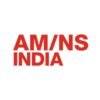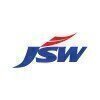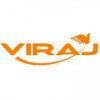Filter interviews by
Vizag Steel Interview Questions and Answers
42 Interview questions
RINL stands for Rashtriya Ispat Nigam Limited, a public sector steel manufacturing company in India.
Established in 1982: RINL was founded to produce steel and promote the development of the steel industry in India.
Located in Visakhapatnam: The company's main plant is situated in Visakhapatnam, Andhra Pradesh, which is strategically positioned for logistics.
Public Sector Undertaking: RINL is a government-owned enti...
Explosives are substances that undergo rapid chemical reactions, producing gas and heat, often used in demolition and military applications.
Types of Explosives: There are two main types - primary (sensitive to heat and shock, e.g., lead azide) and secondary (less sensitive, e.g., TNT).
Applications: Used in construction for demolition, in mining for rock blasting, and in military for munitions.
Chemical Reaction: Ex...
Power plant engineering involves designing, constructing, and operating power plants to generate electricity.
Involves designing power generation systems using various sources such as coal, natural gas, nuclear, or renewable energy
Requires knowledge of thermodynamics, fluid mechanics, and electrical engineering
Focuses on optimizing efficiency, reliability, and safety of power plants
Examples include thermal power pl...
India's current steel production capacity is around 140 million metric tons per year.
India is the second largest steel producer in the world.
The government has set a target of increasing the production capacity to 300 million metric tons by 2030.
Major steel producers in India include Tata Steel, JSW Steel, and Steel Authority of India Limited (SAIL).
Mechanical engineering passion is the driving force that motivates individuals to innovate, design, and solve complex problems in the field of mechanical engineering.
Passion for mechanical engineering involves a deep interest in understanding how things work and a desire to create new technologies.
It drives individuals to constantly seek out new challenges and opportunities for growth within the field.
Passionate m...
VVVF drives are Variable Voltage Variable Frequency drives used to control the speed of AC motors.
VVVF drives adjust the voltage and frequency supplied to the motor to control its speed.
They are commonly used in industries for applications like conveyor belts, pumps, and fans.
VVVF drives help in energy savings and precise control of motor speed.
Examples of VVVF drive manufacturers include Siemens, ABB, and Schneid...
Heat treatment is a process used to alter the physical and sometimes chemical properties of a material through controlled heating and cooling.
Heat treatment involves heating a material to a specific temperature, holding it at that temperature for a certain amount of time, and then cooling it at a controlled rate.
The purpose of heat treatment is to improve the material's hardness, strength, toughness, ductility, an...
Magnetic particle test is a non-destructive testing method used to detect surface and near-surface flaws in ferromagnetic materials.
The test involves magnetizing the component, applying magnetic particles to the surface, and inspecting for indications of defects.
Defects such as cracks, laps, seams, and inclusions can be detected using this method.
The test can be performed using either dry magnetic powder or wet fl...
A steel rule is typically made of stainless steel, providing durability and precision for measuring lengths.
Material: Usually made from stainless steel for corrosion resistance.
Precision: Steel rules are designed for accurate measurements, often marked in millimeters and inches.
Durability: The steel construction ensures longevity and resistance to bending or breaking.
Applications: Commonly used in woodworking, met...
Drive refers to the mechanism that powers a machine or device.
Drive is the source of power that enables a machine or device to function.
It can be electrical, mechanical, hydraulic, or pneumatic.
Examples of drives include electric motors, internal combustion engines, and hydraulic pumps.
The type of drive used depends on the application and the requirements of the machine or device.
Vizag Steel Interview Experiences
32 interviews found
I appeared for an interview in Dec 2024.
(2 Questions)
- Q1. Tell me about yourself?
- Ans.
I am a recent graduate with a degree in engineering, eager to learn and grow in a professional setting.
Recent graduate with a degree in engineering
Eager to learn and grow in a professional setting
Strong problem-solving skills
Excellent communication skills
Experience with team projects and collaboration
- Q2. Tell me about what is power plant engineering?
- Ans.
Power plant engineering involves designing, constructing, and operating power plants to generate electricity.
Involves designing power generation systems using various sources such as coal, natural gas, nuclear, or renewable energy
Requires knowledge of thermodynamics, fluid mechanics, and electrical engineering
Focuses on optimizing efficiency, reliability, and safety of power plants
Examples include thermal power plants,...
Interview Preparation Tips
I appeared for an interview in May 2025, where I was asked the following questions.
- Q1. My induction Self
- Q2. Steel plant types of departments
- Q3. What is the sintering process
I applied via Newspaper Ad and was interviewed in Jul 2024. There were 2 interview rounds.
General studies, mathematics, and technical subjects
(4 Questions)
- Q1. Self Introduction
- Q2. Why I want to join rinl
- Ans.
I want to join RINL because of its reputation for innovation, growth opportunities, and commitment to excellence.
RINL is known for its innovative practices in the steel industry
There are ample opportunities for career growth and development within RINL
RINL has a strong commitment to excellence and quality in its operations
- Q3. About my credentials
- Q4. Do you think you will get a job in rinl
- Ans.
I am confident in my skills and experience, and believe I have a good chance of getting a job in RINL.
I have relevant experience and qualifications for the position
I have a strong track record of success in similar roles
I have researched RINL and believe my skills align well with their needs
Interview Preparation Tips
- Q1. Why do you want to Join RINL
- Q2. Technical questions on core Mechanical engineering
- Q3. Concept of maintenance engineering
Interview Preparation Tips
I applied via Approached by Company
(2 Questions)
- Q1. Knowledge on Refractory application techniques
- Q2. Process of Iron and Steel making
- Ans.
Iron and steel making is a process of extracting iron from iron ore and converting it into steel through various methods.
Iron ore is first mined and then processed to remove impurities and create iron concentrate.
The iron concentrate is then smelted in a blast furnace to produce pig iron, which contains high amounts of carbon.
Pig iron is further processed in a basic oxygen furnace or electric arc furnace to remove exce...
I appeared for an interview in Mar 2025, where I was asked the following questions.
- Q1. Dolomite ka specific gravity
- Q2. What is explosive
- Ans.
Explosives are substances that undergo rapid chemical reactions, producing gas and heat, often used in demolition and military applications.
Types of Explosives: There are two main types - primary (sensitive to heat and shock, e.g., lead azide) and secondary (less sensitive, e.g., TNT).
Applications: Used in construction for demolition, in mining for rock blasting, and in military for munitions.
Chemical Reaction: Explosi...
- Q3. Dolomite chemical formula
- Ans.
Dolomite is a mineral composed of calcium magnesium carbonate, with the chemical formula CaMg(CO3)2.
Chemical Composition: Dolomite consists of calcium (Ca), magnesium (Mg), and carbonate (CO3) ions.
Formation: It typically forms in sedimentary environments and can be found in limestone deposits.
Uses: Dolomite is used in construction, as a soil conditioner, and in the production of glass and ceramics.
Distinction: Dolomit...
- Q4. RINL Full form
- Ans.
RINL stands for Rashtriya Ispat Nigam Limited, a public sector steel manufacturing company in India.
Established in 1982: RINL was founded to produce steel and promote the development of the steel industry in India.
Located in Visakhapatnam: The company's main plant is situated in Visakhapatnam, Andhra Pradesh, which is strategically positioned for logistics.
Public Sector Undertaking: RINL is a government-owned entity, c...
I appeared for an interview in May 2025, where I was asked the following questions.
- Q1. Any Awards or rewards
- Ans.
I have received several awards recognizing my contributions to electronic maintenance and communication technology.
Received the 'Excellence in Maintenance' award for outstanding performance in electronic equipment upkeep.
Honored with a team award for successfully implementing a new communication system that improved efficiency by 30%.
Recognized by management for innovative solutions that reduced downtime of critical co...
- Q2. ISO, 5S, Safety Implementation is ok or not
- Ans.
Implementing ISO standards, 5S methodology, and safety measures is essential for efficient maintenance operations.
ISO standards ensure quality management and consistency in processes, e.g., ISO 9001 for quality assurance.
5S methodology (Sort, Set in order, Shine, Standardize, Sustain) improves workplace organization and efficiency.
Safety implementation reduces workplace accidents, e.g., using PPE (Personal Protective E...
- Q3. Safe, healthy work environment or not
- Ans.
A safe and healthy work environment is crucial for employee well-being and productivity, especially in maintenance roles.
Proper training on equipment handling reduces accidents. For example, using PPE when working with electrical tools.
Regular maintenance checks on equipment prevent malfunctions that could lead to injuries.
Ergonomic workstations can minimize strain and injuries. For instance, adjustable tables for tech...
(2 Questions)
- Q1. Explain about mechanical engineering passion
- Ans.
Mechanical engineering passion is the driving force that motivates individuals to innovate, design, and solve complex problems in the field of mechanical engineering.
Passion for mechanical engineering involves a deep interest in understanding how things work and a desire to create new technologies.
It drives individuals to constantly seek out new challenges and opportunities for growth within the field.
Passionate mechan...
- Q2. Explain the laws of thermodynamics
- Ans.
The laws of thermodynamics are fundamental principles that govern the behavior of energy and matter in the universe.
First Law: Energy cannot be created or destroyed, only transferred or converted.
Second Law: The entropy of a closed system will never decrease over time.
Third Law: As temperature approaches absolute zero, the entropy of a system approaches a minimum value.
Examples: A car engine converting fuel into motion...
(1 Question)
- Q1. Introduction to yourself
- Ans.
I am a motivated and hardworking individual with a passion for learning and growing in my chosen field.
I have a strong work ethic and am eager to gain hands-on experience in the apprenticeship program.
I am a quick learner and enjoy taking on new challenges.
I have excellent communication skills and work well in a team environment.
I am dedicated to furthering my skills and knowledge in my chosen field.
I am excited about ...
(1 Question)
- Q1. Related to Drawings
Top trending discussions






Vizag Steel Interview FAQs
The duration of Vizag Steel interview process can vary, but typically it takes about less than 2 weeks to complete.
Tell us how to improve this page.
Vizag Steel Interviews By Designations
- Vizag Steel Graduate Apprenticeship Trainee Interview Questions
- Vizag Steel Graduate Apprentice Trainee Interview Questions
- Vizag Steel Apprenticeship Trainee Interview Questions
- Vizag Steel Management Trainee Interview Questions
- Vizag Steel Production Interview Questions
- Vizag Steel Operations Associate Interview Questions
- Vizag Steel Project Trainee Interview Questions
- Vizag Steel Senior Manager Interview Questions
- Show more
Interview Questions for Popular Designations
- Graduate Apprenticeship Trainee Interview Questions
- Executive Interview Questions
- Senior Executive Interview Questions
- Analyst Interview Questions
- Software Engineer Interview Questions
- Intern Interview Questions
- Graduate Engineer Trainee (Get) Interview Questions
- Associate Software Engineer Interview Questions
- Show more
Overall Interview Experience Rating
based on 24 interview experiences
Difficulty level
Duration
Interview Questions from Similar Companies
Vizag Steel Reviews and Ratings
based on 585 reviews
Rating in categories
|
Senior Manager
112
salaries
| ₹18 L/yr - ₹30 L/yr |
|
Manager
84
salaries
| ₹15 L/yr - ₹24 L/yr |
|
Graduate Apprenticeship Trainee
43
salaries
| ₹0.6 L/yr - ₹2 L/yr |
|
Deputy Manager
42
salaries
| ₹13 L/yr - ₹20.8 L/yr |
|
Deputy General Manager
41
salaries
| ₹24 L/yr - ₹42.2 L/yr |

Tata Steel

JSW Steel

Jindal Steel and Power

ArcelorMittal Nippon Steel
- Home >
- Interviews >
- Vizag Steel Interview Questions













